To Coimbra
30/07/07 19:49 Filed in: Portugal
The town of Coimbra is about an hour by train inland from Figueira da Foz. The university there is one of the oldest in Europe (1200ish) and was said to be worth a visit and I had been told about a new footbridge built there last year which was said to be quite stunning.
There are two stations in Coimbra and my train stopped at the second which is some distance from the town centre. My walk into town was not encouraging with the outskirts of Coimbra being quite horrible. Once into the old town things became more interesting.
Most of Coimbra is on the south bank of the river (which drains to the sea at Figueira da Foz). Along this river bank are a series of public gardens in three phases. The first two are mature with large trees and plenty of shade. The third phase is very recent, modern in design, but with few trees. Where this phase ends a new pedestrian bridge,named Ponte Pedonal Pedro E Inés, has been built across the river. It was opened by the president of Portugal in November 2006 and was designed by Cecil Balmond, a British architect, and funded by EU grants.
At present the bridge seems to go from nowhere to nowhere although there are building sites near each end and in future it may link two new residential developments.
The bridge however is something completely different and is quite stunning.
From upstream or downstream it just looks like a new modern bridge.
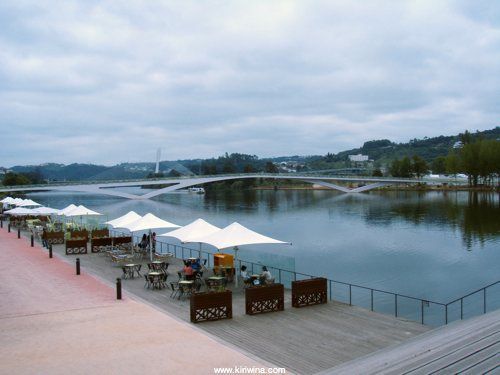
But as one approaches things are not what they seem. The bridge has a curve in the middle.
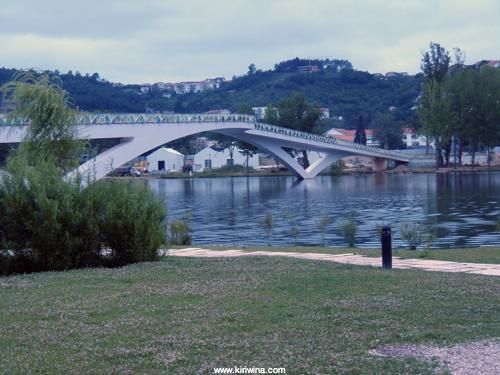
The sides comprise panels of pastel coloured polycarbonate (I think) set at shallow angles from each other.
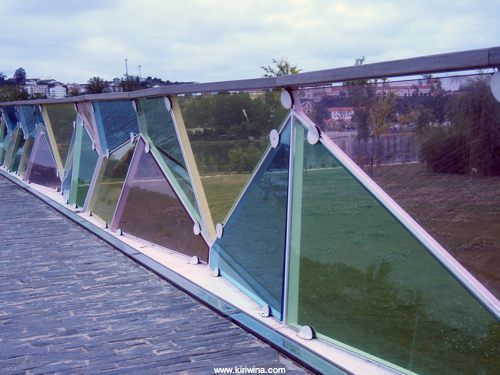
Access is via stairs or ramp both paved with slate.
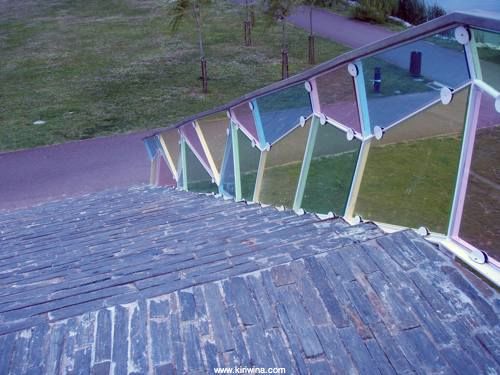
Looking up at the university from the bridge.
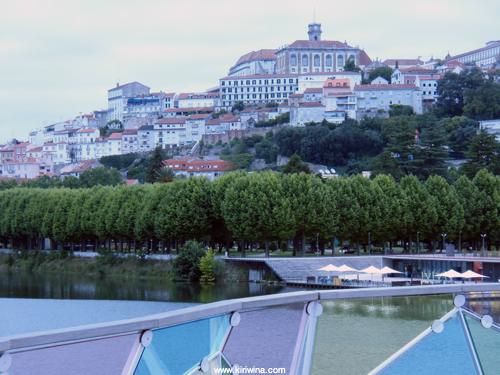
The two halves are offset by one bridge width in the centre as though construction started from each bank without checking that the structures would meet in the middle and a kink added later to join the two together. The kink was of course all part of the design.
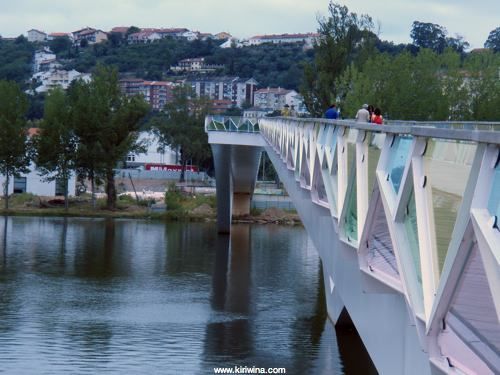
The hand rails zig-zag all the way across creating a series of bays where people naturally lean.
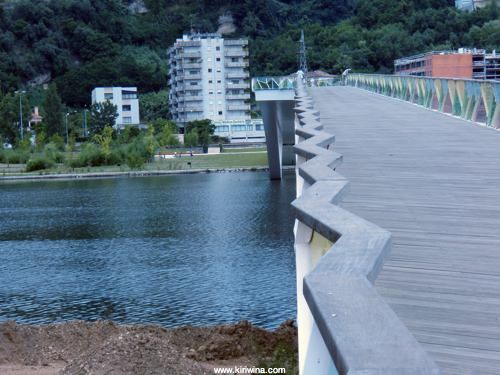
The panels catch the sun by day and are illuminated at night by recessed lighting at the edge of the footway.
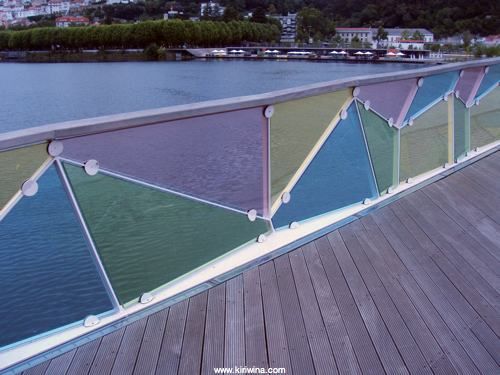
At the centre where the two spans meet the bridge is double its normal width.
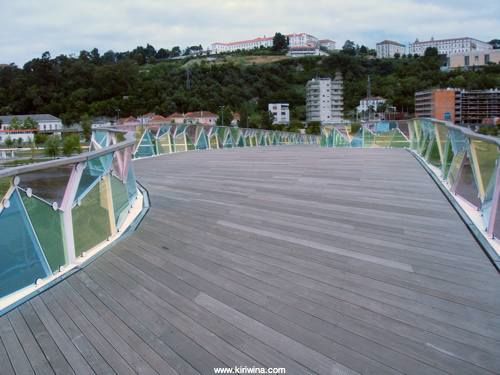
This is also the highest point.
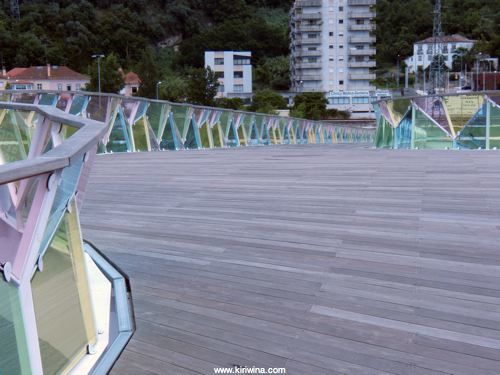
Panels angled to catch light in a variety of ways.
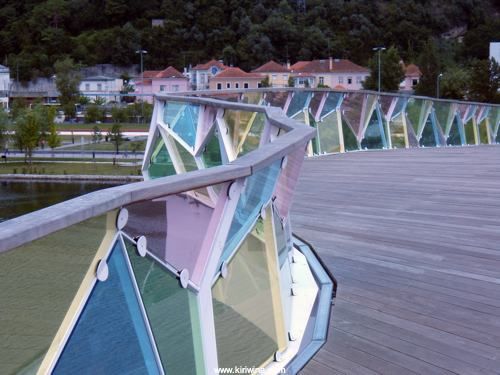
Box section structure and the centre offset.
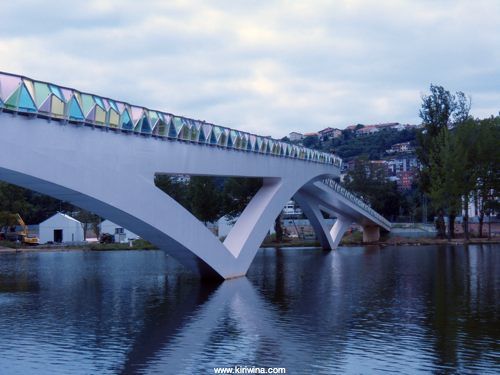
From downstream the curve starts to disappear.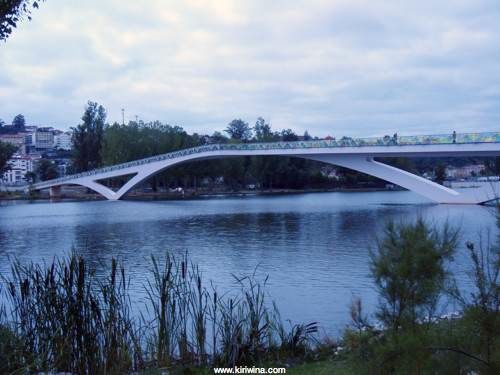
Slate fountain in the new gardens nearby.
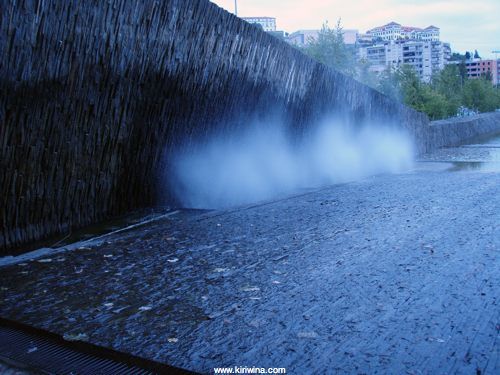
And the old style gardens with shady canopy.
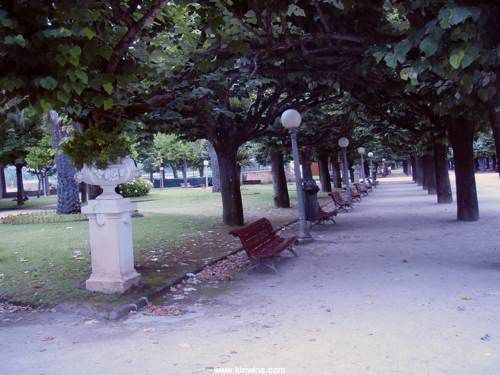
University courtyard, previously a royal palace, on a high point overlooking the river.
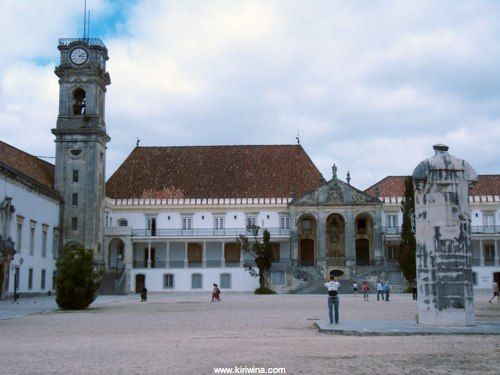
View down river from the university. Ponte Pedonal Pedro E Inés is just visible in the foreground. The larger structure is a road bridge.
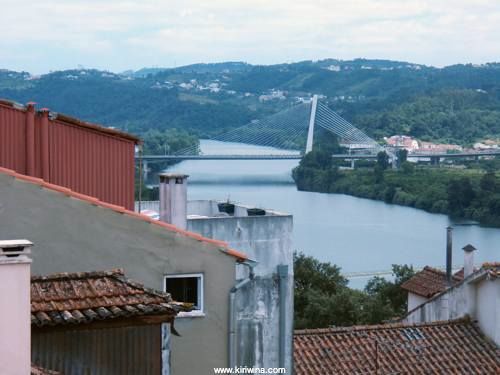
A more modern design for the university library...
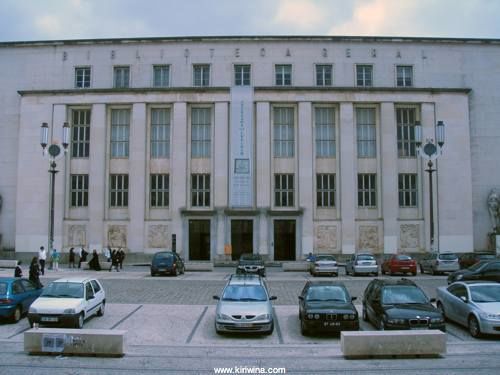
...I liked these lights.
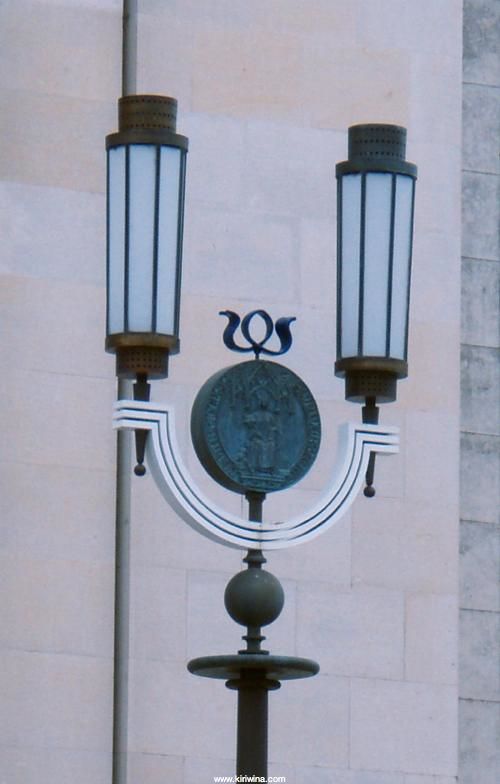
This lovely building is the Faculdade de Farmacia.
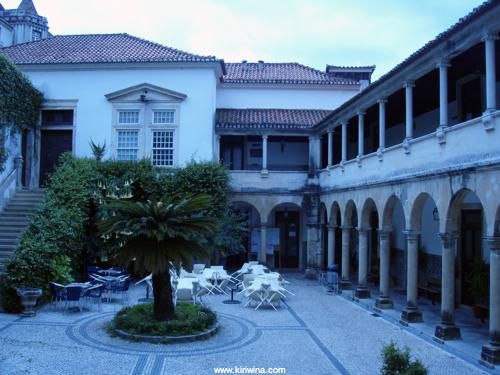
One ot the old gates in the city wall with roadway leading up to the university.
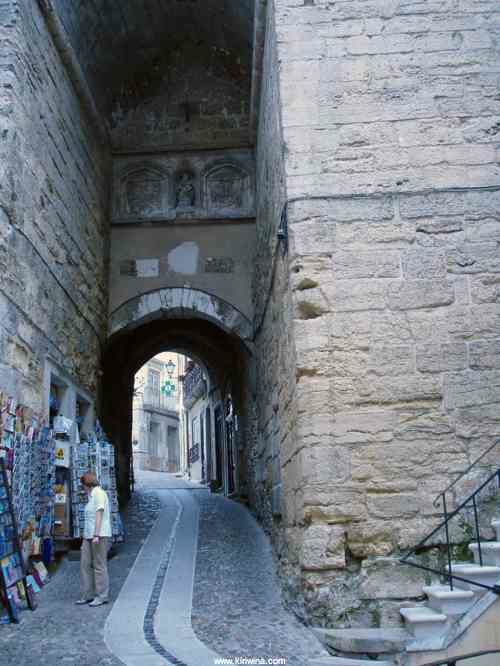
There are two stations in Coimbra and my train stopped at the second which is some distance from the town centre. My walk into town was not encouraging with the outskirts of Coimbra being quite horrible. Once into the old town things became more interesting.
Most of Coimbra is on the south bank of the river (which drains to the sea at Figueira da Foz). Along this river bank are a series of public gardens in three phases. The first two are mature with large trees and plenty of shade. The third phase is very recent, modern in design, but with few trees. Where this phase ends a new pedestrian bridge,named Ponte Pedonal Pedro E Inés, has been built across the river. It was opened by the president of Portugal in November 2006 and was designed by Cecil Balmond, a British architect, and funded by EU grants.
At present the bridge seems to go from nowhere to nowhere although there are building sites near each end and in future it may link two new residential developments.
The bridge however is something completely different and is quite stunning.
From upstream or downstream it just looks like a new modern bridge.

But as one approaches things are not what they seem. The bridge has a curve in the middle.

The sides comprise panels of pastel coloured polycarbonate (I think) set at shallow angles from each other.

Access is via stairs or ramp both paved with slate.

Looking up at the university from the bridge.

The two halves are offset by one bridge width in the centre as though construction started from each bank without checking that the structures would meet in the middle and a kink added later to join the two together. The kink was of course all part of the design.

The hand rails zig-zag all the way across creating a series of bays where people naturally lean.

The panels catch the sun by day and are illuminated at night by recessed lighting at the edge of the footway.

At the centre where the two spans meet the bridge is double its normal width.

This is also the highest point.

Panels angled to catch light in a variety of ways.

Box section structure and the centre offset.

From downstream the curve starts to disappear.

Slate fountain in the new gardens nearby.

And the old style gardens with shady canopy.

University courtyard, previously a royal palace, on a high point overlooking the river.

View down river from the university. Ponte Pedonal Pedro E Inés is just visible in the foreground. The larger structure is a road bridge.

A more modern design for the university library...

...I liked these lights.

This lovely building is the Faculdade de Farmacia.

One ot the old gates in the city wall with roadway leading up to the university.

